Chengjie Mou
An Integrative Paradigm for Enhanced Stroke Prediction: Synergizing XGBoost and xDeepFM Algorithms
Oct 25, 2023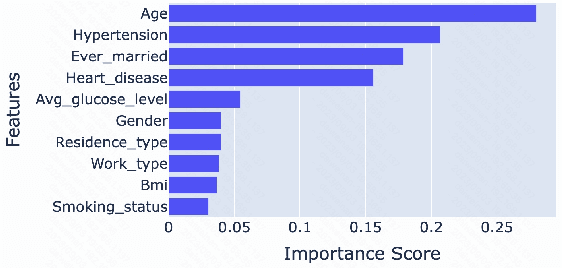
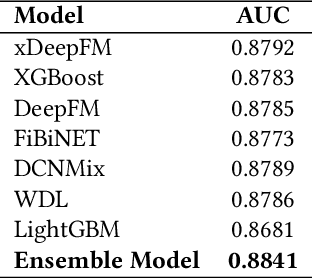
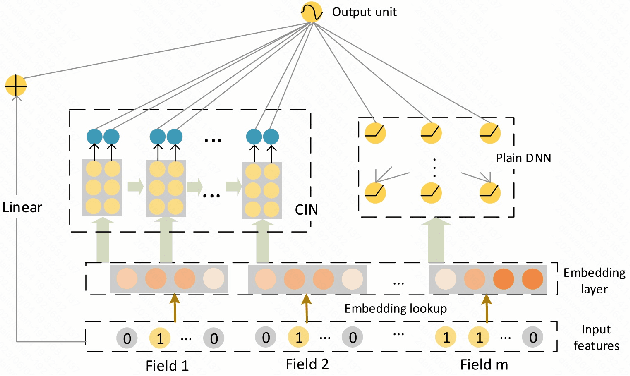
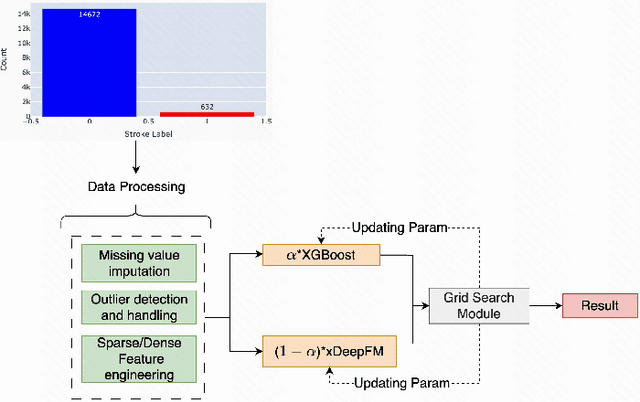
Abstract:Stroke prediction plays a crucial role in preventing and managing this debilitating condition. In this study, we address the challenge of stroke prediction using a comprehensive dataset, and propose an ensemble model that combines the power of XGBoost and xDeepFM algorithms. Our work aims to improve upon existing stroke prediction models by achieving higher accuracy and robustness. Through rigorous experimentation, we validate the effectiveness of our ensemble model using the AUC metric. Through comparing our findings with those of other models in the field, we gain valuable insights into the merits and drawbacks of various approaches. This, in turn, contributes significantly to the progress of machine learning and deep learning techniques specifically in the domain of stroke prediction.
MedLens: Improve mortality prediction via medical signs selecting and regression interpolation
May 19, 2023Abstract:Monitoring the health status of patients and predicting mortality in advance is vital for providing patients with timely care and treatment. Massive medical signs in electronic health records (EHR) are fitted into advanced machine learning models to make predictions. However, the data-quality problem of original clinical signs is less discussed in the literature. Based on an in-depth measurement of the missing rate and correlation score across various medical signs and a large amount of patient hospital admission records, we discovered the comprehensive missing rate is extremely high, and a large number of useless signs could hurt the performance of prediction models. Then we concluded that only improving data-quality could improve the baseline accuracy of different prediction algorithms. We designed MEDLENS, with an automatic vital medical signs selection approach via statistics and a flexible interpolation approach for high missing rate time series. After augmenting the data-quality of original medical signs, MEDLENS applies ensemble classifiers to boost the accuracy and reduce the computation overhead at the same time. It achieves a very high accuracy performance of 0.96% AUC-ROC and 0.81% AUC-PR, which exceeds the previous benchmark.
FineEHR: Refine Clinical Note Representations to Improve Mortality Prediction
May 04, 2023Abstract:Monitoring the health status of patients in the Intensive Care Unit (ICU) is a critical aspect of providing superior care and treatment. The availability of large-scale electronic health records (EHR) provides machine learning models with an abundance of clinical text and vital sign data, enabling them to make highly accurate predictions. Despite the emergence of advanced Natural Language Processing (NLP) algorithms for clinical note analysis, the complex textual structure and noise present in raw clinical data have posed significant challenges. Coarse embedding approaches without domain-specific refinement have limited the accuracy of these algorithms. To address this issue, we propose FINEEHR, a system that utilizes two representation learning techniques, namely metric learning and fine-tuning, to refine clinical note embeddings, while leveraging the intrinsic correlations among different health statuses and note categories. We evaluate the performance of FINEEHR using two metrics, namely Area Under the Curve (AUC) and AUC-PR, on a real-world MIMIC III dataset. Our experimental results demonstrate that both refinement approaches improve prediction accuracy, and their combination yields the best results. Moreover, our proposed method outperforms prior works, with an AUC improvement of over 10%, achieving an average AUC of 96.04% and an average AUC-PR of 96.48% across various classifiers.
BotShape: A Novel Social Bots Detection Approach via Behavioral Patterns
Mar 17, 2023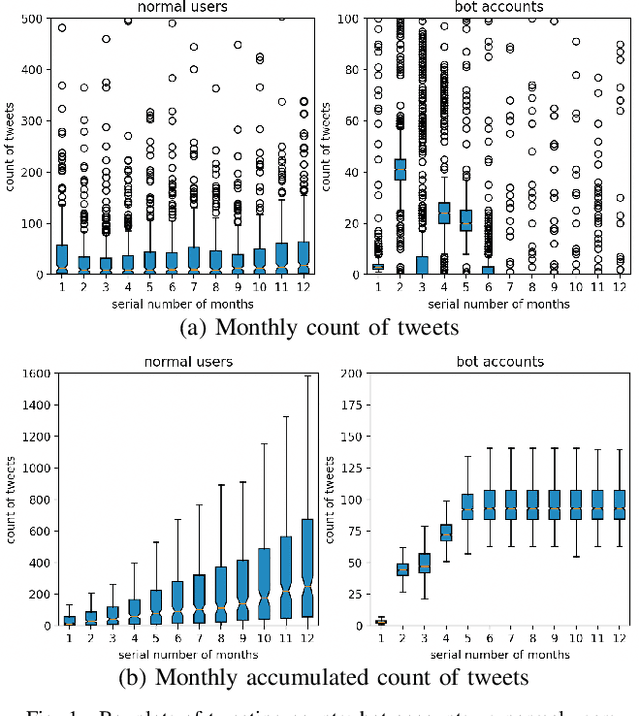
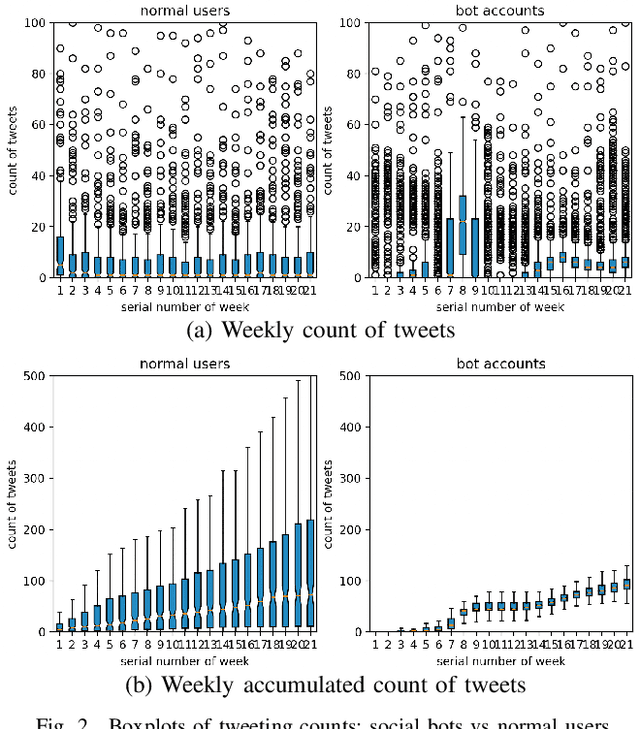
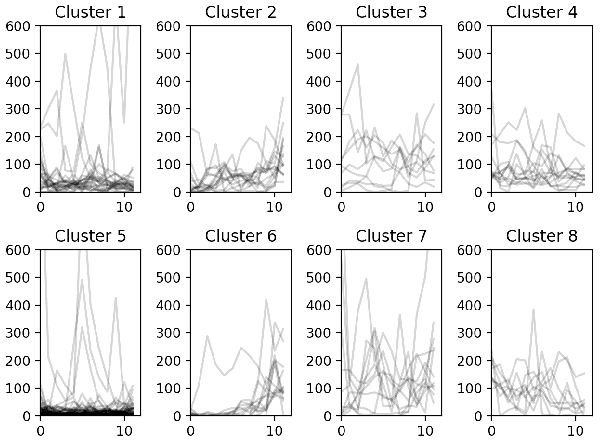
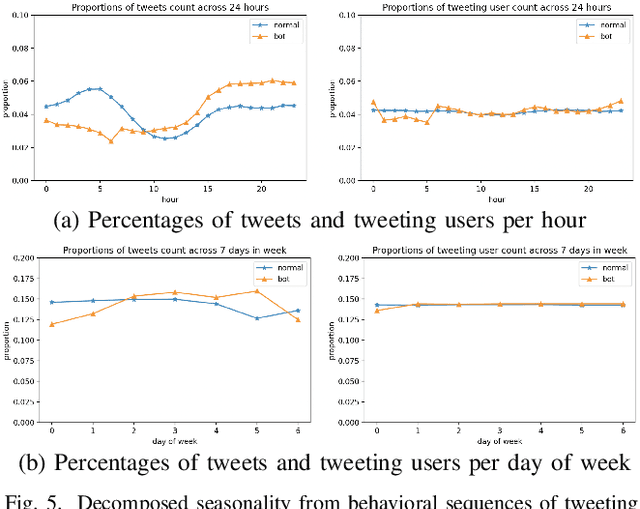
Abstract:An essential topic in online social network security is how to accurately detect bot accounts and relieve their harmful impacts (e.g., misinformation, rumor, and spam) on genuine users. Based on a real-world data set, we construct behavioral sequences from raw event logs. After extracting critical characteristics from behavioral time series, we observe differences between bots and genuine users and similar patterns among bot accounts. We present a novel social bot detection system BotShape, to automatically catch behavioral sequences and characteristics as features for classifiers to detect bots. We evaluate the detection performance of our system in ground-truth instances, showing an average accuracy of 98.52% and an average f1-score of 96.65% on various types of classifiers. After comparing it with other research, we conclude that BotShape is a novel approach to profiling an account, which could improve performance for most methods by providing significant behavioral features.
 Add to Chrome
Add to Chrome Add to Firefox
Add to Firefox Add to Edge
Add to Edge